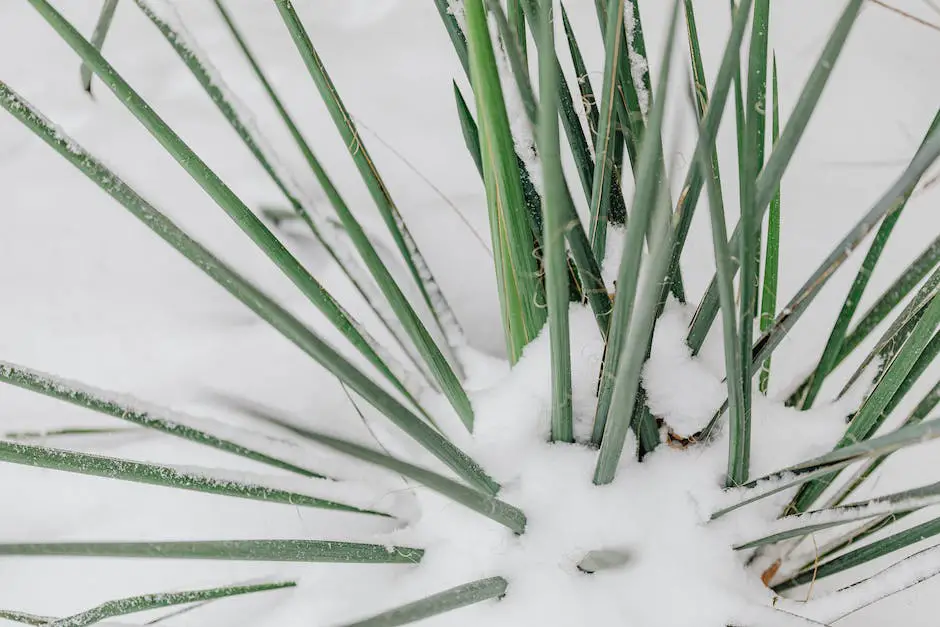For every gardening enthusiast, winter can present a specific set of challenges, especially when it comes to protecting plants from harsh conditions. Key to navigating this period successfully is understanding what plant hardiness zones are, knowing your particular region’s designation, and having insight into the unique needs of your flora during these colder months. Arming oneself with the right knowledge and practical strategies can be the difference between a thriving garden in spring and dealing with the loss of your favorite plants. This shared knowledge covers the importance of plant hardiness zones, the unique winter requirements of different plant types, and a variety of practical and implementable techniques to protect your garden during winter.
Understanding Plant Hardiness Zones
Understanding Plant Hardiness Zones: The Basics
A plant hardiness zone is a geographical designation which determines the specific variety of plants that are capable of growing within a region based on its climatic conditions, primarily the minimum temperatures. The USDA Hardiness Zone Map divides North America into 13 zones, with Zone 1 being the coldest and Zone 13 the warmest. Each zone represents a 10°F degree difference in the average annual minimum winter temperature.
Why Hardiness Zones Matter
Hardiness zones are vital in determining which plants are likely to withstand the freezing temperatures of the winter months and thrive in a particular location. Hence, if you want to protect your plants during winter, understanding your hardiness zone is crucial. This knowledge allows you to choose appropriate plants for your garden that can survive your area’s lowest temperatures.
How to Identify Your Hardiness Zone
To identify your plant hardiness zone, visit the USDA Plant Hardiness Zone Map’s interactive website. Enter your zip code into the ‘Find Your Hardiness Zone by ZIP Code’ bar and press ‘Submit.’ You’ll be provided with a zone number and temperature range. For example, if you live in Tucson, Arizona, you are in Zone 9b, meaning the average minimal temperature is -3.9°C to -1.1°C (25 to 30 °F).
Use Your Hardiness Zone to Protect Your Plants in Winter
Once you have identified your zone, use this information to protect your plants in winter. For instance, in colder zones (1-4), you may need to consider winter protection strategies like using mulch to insulate soil and protect plant roots from freezing or covering plants with horticultural fleece.
In warmer zones (8-13), winter protection may not be necessary for most plants, though you should still monitor weather forecasts for unexpected cold snaps. Also, keep in mind that while hardiness zones provide a good starting point, they don’t account for other factors that could impact a plant’s survival, such as soil type, wind, rainfall, and daylight.

Winterizing Different Types of Plants
Understanding Plant Types and Their Winter Needs
Trees, shrubs, perennials, annuals, and other plant types each have specific winter needs. Knowing what these needs are is the first step to protecting your plants during the colder months. For example, while deciduous trees like maples and aspens can withstand harsh winter elements, evergreens may require extra protection due to their year-round foliage.
Winter Watering Guidelines
When it comes to watering plants in winter, the emphasis should be on timing. Watering should take place in late fall before the first deep freezes occur. This way, the moisture will not freeze in the ground around the plant’s roots and cause damage. Evergreens, in particular, need ample water in the fall as they continue to lose water through their leaves during winter.
Mulching for Winter Protection
Mulching is another important part of winter plant protection. Mulch insulates the ground, keeping it a more consistent temperature and preventing a freeze-thaw cycle that can heave plants out of the ground. For most plants, a 2- to 3-inch layer of mulch is sufficient. However, certain perennial plants, such as roses, benefit from a deeper, 4- to 6-inch layer of mulch for additional insulation.
Protective Coverings for Plants
For tender perennials and annuals, consider using protective coverings to insulate them against the harsh winter weather. Burlap wraps, frost cloths, and other coverings can provide a layer of protection against cold winter winds and freezing temperatures. Be sure to remove the coverings during warmer winter days to avoid overheating the plants.
Strategies for Specific Plant Types
Deciduous trees and shrubs need little to no extra protection in winter, but you might consider wrapping younger trees to protect their bark. On the other hand, evergreens may benefit from an anti-desiccant spray to limit the amount of water they lose through their leaves.
Perennial plants generally become dormant in winter and should be mulched for protection. However, be sure to remove the mulch in spring to usher in their growing season.
Annuals have a one-year life cycle that usually ends in winter. Most cannot survive the winter conditions, so they should be composted. However, some annuals, like pansies and winter rye, are winter-hardy and can thrive in colder weather with proper care.
Common Winter Plant Threats
Common winter threats to plants include freeze-thaw cycles, winter burn on evergreens, and damage from ice or heavy snow. Rodents, like voles and rabbits, can also damage plants by gnawing on bark or eating plant roots during winter. Using repellents or wire mesh can deter these pests.
Understanding the specific winter needs of your plants can ensure they survive and thrive in the colder months. Do your research, give special attention to tender varieties, and don’t forget to water, mulch, and protect your plants from pests and harsh weather elements.

Practical Winter Plant Protection Techniques
Understand the importance of winter plant protection
Cold, harsh winter weather can be detrimental to many types of plants. Both temperature and wind are factors that can cause damage to or kill plants during winter months. Therefore, it becomes important for garden enthusiasts to learn and use effective techniques to protect their plants. Potentially, protecting your plants during the winter may consist of various methods like plant wraps, wind screens, homemade greenhouses, and more.
Use of Burlap Wraps in Plant Protection
Burlap wraps are one of the simplest and most effective ways to protect your plants from winter. It works by creating a barrier against harsh winds and freezing weather. When using burlap wraps, it is crucial not to wrap the plants too tightly. Leave a bit of room for air to circulate while ensuring the plant is covered. For larger plants, stakes can be driven into the ground around the plant and burlap or a similar material can be stapled or tied to the stakes, making a screen. Don’t forget to remove the wrap once the weather warms up.
Creating Wind Screens for Plant Protection
Another important technique to protect your plants in winter is the use of wind screens. Wind can create a wind-chill effect that exacerbates the impact of low temperatures. Windscreens can be particularly useful in protecting delicate perennial plants. You can build a windscreen with materials such as wood or plastic and position it on the windward side of your plants. This structure will help to deflect the chilling winds away from your plants, reducing potential damage.
Making Homemade Greenhouses for Winter Plant Protection
Building homemade greenhouses can be an excellent solution for protecting your plants in winter. A greenhouse can trap heat from the sunlight and provide a warm environment for your plants to survive in. You can build a simple greenhouse by creating a wooden or PVC frame and covering it with a clear plastic sheet. Ensure that the greenhouse is placed in a location that will receive ample sunlight during the day.
Mulching for Plant Protection
Mulching can play a significant role in protecting your plants during winter. A good layer of mulch can insulate the soil, prevent frost-heave, and help retain moisture in the winter. You can use organic mulch like straw, leaves, pine needles, or wood chips, or inorganic materials like stones or plastic. Apply about 3-4 inches of mulch around the base of the plants to protect them.
Using Protective Plant Covers or Cloches
Protective plant covers, also known as cloches, can be bought or made at home. Cloches are typically used for single plants or smaller clusters. A cloche can be as simple as a clear plastic jug with the bottom cut off. By placing the cloche over a plant and pressing it into the ground slightly, you can protect the plant from wind and create a mini-greenhouse effect.
Remember, the key to successful winter plant protection is to be proactive. Start your winter preparation before the first freeze. With these practical methods, you’ll be able to provide adequate care for your plants even amidst the harshest winter conditions.

Plant protection during winter is critical, yet sometimes challenging, part of gardening. With the right preparation and understanding, it doesn’t have to be daunting. By knowing your plant hardiness zone, recognizing the specific needs of your collection of plants, and making use of practical protection methods, you can ensure that your garden not only survives the winter but thrives right into spring. Remember, every plant is unique, and careful consideration of their winter needs will result in a vibrant and resilient garden. Adopt these techniques, and you can look forward to a rewarding gardening experience, regardless of what winter throws your way.




